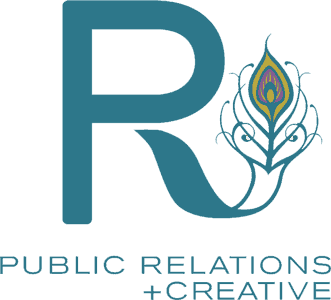Things move fast in the public relations arena. Pitches fly, content calendars fill, social posts go live, and clients expect visibility yesterday. For smaller agencies, especially, it’s easy for team members to stay heads-down in execution mode—focused on their own deadlines, deliverables, and inboxes—without pausing to check: Are we still chasing the right story? Are we aligned on the “why”? It’s a challenge we’ve wrestled with ourselves at RPR as we grow. And we’ve learned that managing a fast-moving agency requires more than just strong task management—it demands intentional PR management strategies that keep the big picture in view.

Here are five PR management tactics we’ve found helpful for keeping strategy front and center while still moving at full speed:
1. PR Management 101: Start with a Strategy—and Revisit It Often
Your kickoff strategy document should be more than a one-and-done artifact. It’s the north star for the relationship, but without regular revisits, it’s easy for the team to drift.
“We always say that strategy is a living, breathing thing,” says Emily Reynolds, PR expert and founder of RPR. “If you don’t check in on it regularly, it becomes outdated—and then the work becomes disconnected.”
Treat the strategy like a living document. Rechecking goals, adjusting priorities, and realigning with the client at major milestones (or pivots) ensures that everyone understands why they’re doing what they’re doing. This also gives junior team members valuable context. You can also schedule quarterly check-ins to revisit the core strategy—even if nothing’s broken. If you wait until something goes off track, you’ve waited too long.
2. Define Roles Across Functions—Then Connect the Dots
In a multi-disciplinary agency like RPR, content, social, PR, and digital often run in parallel. But too often, that parallel structure becomes siloed.
Instead, bring cross-functional partners into key meetings. Let your content strategist weigh in on pitch angles. Invite your social team to brainstorm brand storylines. When teams understand what others are working on—and why—it builds better ideas and more cohesive campaigns.
And make sure every person knows not just what they’re responsible for, but how it ladders up to the broader goals.
“We’ve learned that transparency between departments doesn’t just create stronger campaigns—it makes our people feel more empowered,” says Emily. “When someone sees the connection between their work and the client’s bigger picture, it’s a game-changer.”
3. Establish Clear Checkpoints (Not Just Status Calls)
Weekly status calls are table stakes—but they’re not enough. Without structured checkpoints, people fall back into task lists and lose sight of outcomes.
We’ve found it helpful to add monthly alignment reviews where we pause to ask:
- What did we say we’d achieve this month?
- What’s working, and what’s not?
- What’s changed for the client?
- Do we need to pivot?
This space for critical reflection often reveals deeper insights than a rapid-fire status update ever could.
4. Over-Communicate the “Why” to the Client (and Internally)
Clients hire PR agencies for results, but they stay because of trust, and that trust grows when we connect the dots between deliverables and strategy.
If a media list gets trimmed, explain why. If a story doesn’t land, walk them through the learnings. When a win happens, tie it back to the big picture.
Internally, this matters just as much. Make sure junior staff know why they’re being asked to build a media list a certain way or frame a pitch around a specific audience. The more context we share, the more empowered the whole team becomes.
“We’re not just sending press hits into a void,” Emily explains. “Every pitch, every post, every decision has a purpose—and our job is to make sure our team and our clients never lose sight of that purpose.”

5. Encourage Cross-Team Debriefs and Collaboration
One of our most effective practices has been internal campaign retros—quick, collaborative meetings after a campaign, event, or product launch. Every team shares what worked, what didn’t, and what to do next time.
This doesn’t have to be formal or time-consuming. Sometimes it’s a 15-minute coffee chat. The goal is to keep learning alive and spread insights across functions.
Plus, it builds stronger relationships between departments, which helps ideas and information flow more easily next time.
Bringing It All Together
At the end of the day, PR management isn’t just about juggling timelines and deliverables. It’s about cultivating clarity in direction, collaboration, and purpose. When teams stay aligned on the big picture, they work smarter, communicate better, and deliver results that truly move the needle.
At RPR, we’re still evolving our systems to support this kind of clarity and collaboration, but these practices have helped us move from reactive to proactive. They’ve helped us not just do the work, but make the work mean something.
And when the “why” is clear, everyone shows up stronger.
Curious to learn more pr management tips to align teams, clients, and campaigns? Connect with RPR today!
